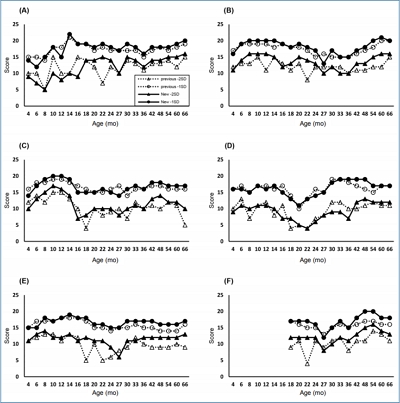- Original Article
- Developmental and Behavioral Medicine
- Development of the Korean Developmental Screening Test for Infants and Children (K-DST)
-
Hee Jung Chung, Donghwa Yang, Gun-Ha Kim, Sung Koo Kim, Seoung Woo Kim, Young Key Kim, Young Ah Kim, Joon Sik Kim, Jin Kyung Kim, Cheongtag Kim, In-Kyung Sung, Son Moon Shin, Kyung Ja Oh, Hee-Jeong Yoo, Hee Joon Yu, Seoung-Joon Lim, Jeehun Lee, Hae-Ik Jeong, Jieun Choi, Jeong-Yi Kwon, Baik-Lin Eun
-
Clin Exp Pediatr. 2020;63(11):438-446. Published online May 14, 2020
-

|
Question: Can the Korean Developmental Screening Test for Infants and Children (K-DST) be a useful screening tool for infants and children in Korea?
Finding: The K-DST has high reliability (internal consistency of 0.73–0.93, test-retest reliability of 0.77–0.88) and a high discriminatory ability with a sensitivity of 0.833 and specificity of 0.979.
Meaning: The K-DST is an effective and reliable screening tool for infants and children with neurodevelopmental disorders in Korea. |
-
-
- Characteristics of late-onset epilepsy and EEG findings in children with autism spectrum disorders
-
Haneul Lee, Hoon Chul Kang, Seung Woo Kim, Young Key Kim, Hee Jung Chung
-
Clin Exp Pediatr. 2011;54(1):22-28. Published online January 31, 2011
-
|
|
Purpose To investigate the clinical characteristics of late-onset epilepsy combined with autism spectrum disorder (ASD), and the relationship between certain types of electroencephalography (EEG) abnormalities in ASD and associated neuropsychological problems. MethodsThirty patients diagnosed with ASD in early childhood and later developed clinical seizures were reviewed retrospectively. First, the clinical characteristics, language and behavioral regression, and EEG findings of these late-onset epilepsy... |
-
-
- One-year evaluation of the national health screening program for infants and children in Korea
-
Jin Soo Moon, Soon Young Lee, Baik-Lin Eun, Young Key Kim, Young Key Kim, Son Moon Shin, Hea Kyoung Lee, Hee Jung Chung
-
Clin Exp Pediatr. 2010;53(3):307-313. Published online March 15, 2010
-
|
|
Purpose:Results of the Korea National Health Screening Program for Infants and Children, which was launched in November 2007, were evaluated for future research and policy development.
Methods:Data from a total of 2,729,340 cases were analyzed. Five visiting ages, such as 4, 9, 18, 30, and 60 months, were included. Several parameters such as stunting, obesity, and positive rate of developmental... |
-
-
- One-year evaluation of the national health screening program for infants and children in Korea
-
Jin Soo Moon, Soon Young Lee, Baik-Lin Eun, Young Key Kim, Young Key Kim, Son Moon Shin, Hea Kyoung Lee, Hee Jung Chung
-
Clin Exp Pediatr. 2010;53(3):307-313. Published online March 15, 2010
-
|
|
Purpose:Results of the Korea National Health Screening Program for Infants and Children, which was launched in November 2007, were evaluated for future research and policy development.
Methods:Data from a total of 2,729,340 cases were analyzed. Five visiting ages, such as 4, 9, 18, 30, and 60 months, were included. Several parameters such as stunting, obesity, and positive rate of developmental... |
-
-
- Review Article
- Overview of the national health screening program for infant and children
-
Baik-Lin Eun, Seong Woo Kim, Young Key Kim, Jung Wook Kim, Jin Soo Moon, Su Kyung Park, In Kyung Sung, Son Moon Shin, Sun Mi Yoo, So Hee Eun, Hea Kyoung Lee, Hyun Taek Lim, Hee Jung Chung
-
Clin Exp Pediatr. 2008;51(3):225-232. Published online March 15, 2008
-
|
|
The mission of National Health Screening Program for Infant and Children is to promote and improve the health, education, and well-being of infants, children, families, and communities. Although the term 'diagnosis' usually relates to pathology, a similar diagnostic approach applies to the child seen primarily for health supervision. In the case of health, diagnosis determines the selection of appropriate health... |
-
-
|













